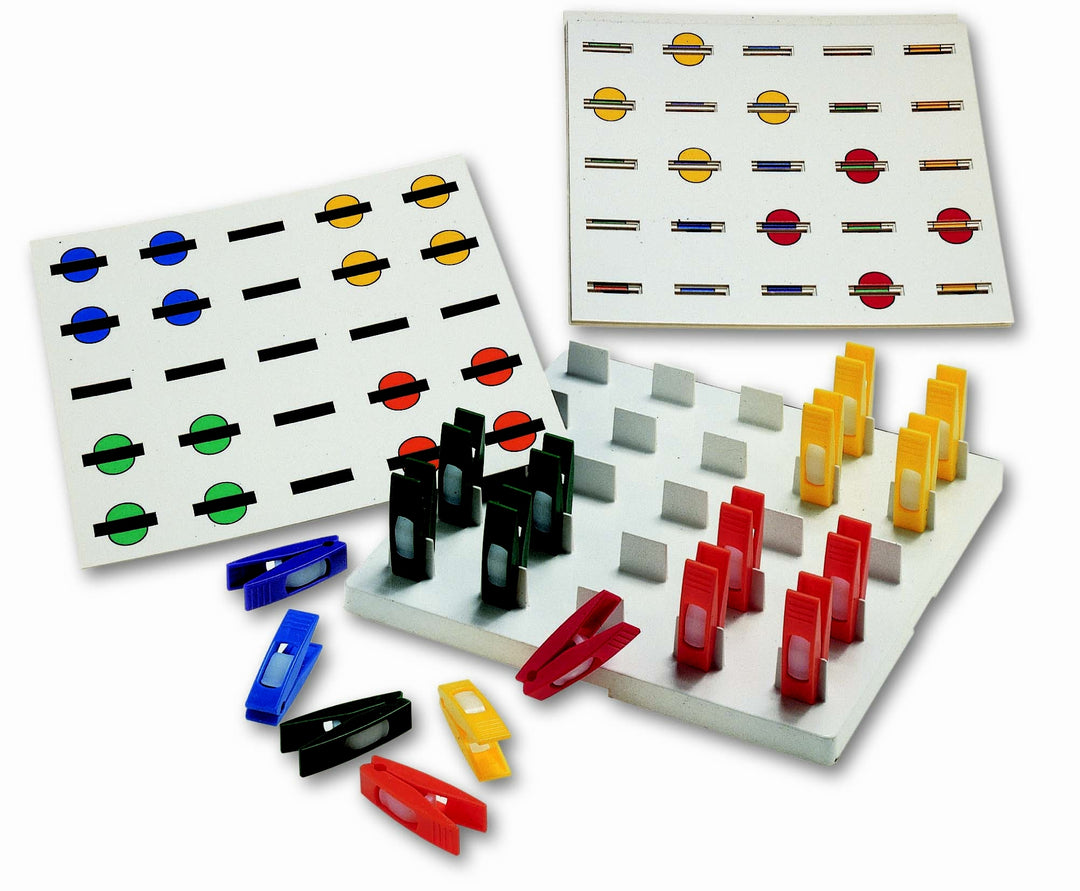Challenge for spatial insight and eye-hand coordination!
Authors: Marlene & Marguerite
Marlene: Pediatric physiotherapist and pediatric pelvic floor physiotherapist
Marguerite: Pediatric occupational therapist
Using the clothespin game for different ages
The younger child

Tweezer grip
The younger children (groups 1, 2 and 3) can practice their pincer grip with this clothespin game when picking up and placing the clothespins in the pattern board. They also have to look carefully at where they have to put the clothespin to get the right pattern.
Eye-hand coordination
This stimulates eye-hand coordination and spatial insight in a fun way!
Learning spatial concepts is a fun part of the clothespin game grip on patterns. Place the yellow above the red, etc. Left, right, outside, inside, above and below can be practiced well.
Lateralization
It can also be used to practice lateralization in children. By consciously placing the colors on the opposite side of the board, the child must cross the center line.
Manipulate one hand
Manipulation in one hand can be practiced (this is difficult!). By manipulating the clamp in the hand (the child must not let the other hand help) the finger movements of the hand are stimulated.
In short, a versatile tool to practice and stimulate multiple aspects!
The older child
Spatial insight
For children in groups 4 to 8, it is a different way to make a challenging clothespin game. With this group, you can focus more on spatial insight and visual perception. You can use the more difficult pattern cards. But if these are too easy, you can apply it in the following ways:
Follow verbal instructions
1. Explain to the child where on the board they should place the clothes peg to eventually create the complete pattern.
Using verbal instruction (from the therapist) to have the gripper placed in the right place. The child must then convert the instruction into an action and apply the concepts. For example, third from the left, second from the top, etc. Here, the application of the concepts goes a step further.
Giving verbal instructions
2. Let the child explain it to you
Now the child has to apply the concepts themselves. It turns out that this is often quite a challenge and sometimes even a step too difficult.
Two children working together
3. Have the child explain it to another child. The challenge here is that if the child does not understand the instruction, that person can explain it in a different way. This gives it another (more difficult) dimension.
All these variations show whether the child has mastered spatial concepts. In this way it is also a real challenge for older children.































Leave a comment